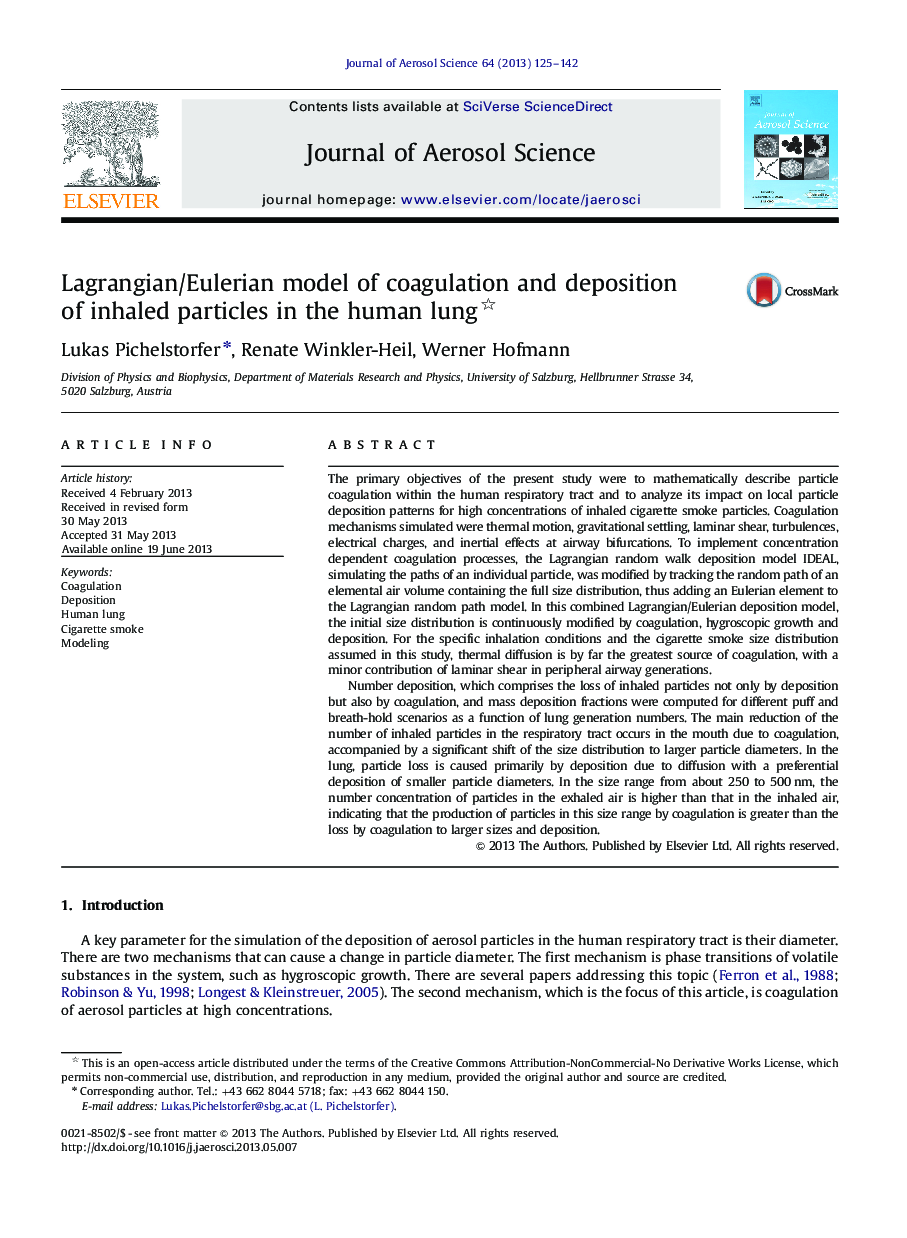| Article ID | Journal | Published Year | Pages | File Type |
|---|---|---|---|---|
| 6344557 | Journal of Aerosol Science | 2013 | 18 Pages |
Abstract
Number deposition, which comprises the loss of inhaled particles not only by deposition but also by coagulation, and mass deposition fractions were computed for different puff and breath-hold scenarios as a function of lung generation numbers. The main reduction of the number of inhaled particles in the respiratory tract occurs in the mouth due to coagulation, accompanied by a significant shift of the size distribution to larger particle diameters. In the lung, particle loss is caused primarily by deposition due to diffusion with a preferential deposition of smaller particle diameters. In the size range from about 250 to 500Â nm, the number concentration of particles in the exhaled air is higher than that in the inhaled air, indicating that the production of particles in this size range by coagulation is greater than the loss by coagulation to larger sizes and deposition.
Related Topics
Physical Sciences and Engineering
Earth and Planetary Sciences
Atmospheric Science
Authors
Lukas Pichelstorfer, Renate Winkler-Heil, Werner Hofmann,
